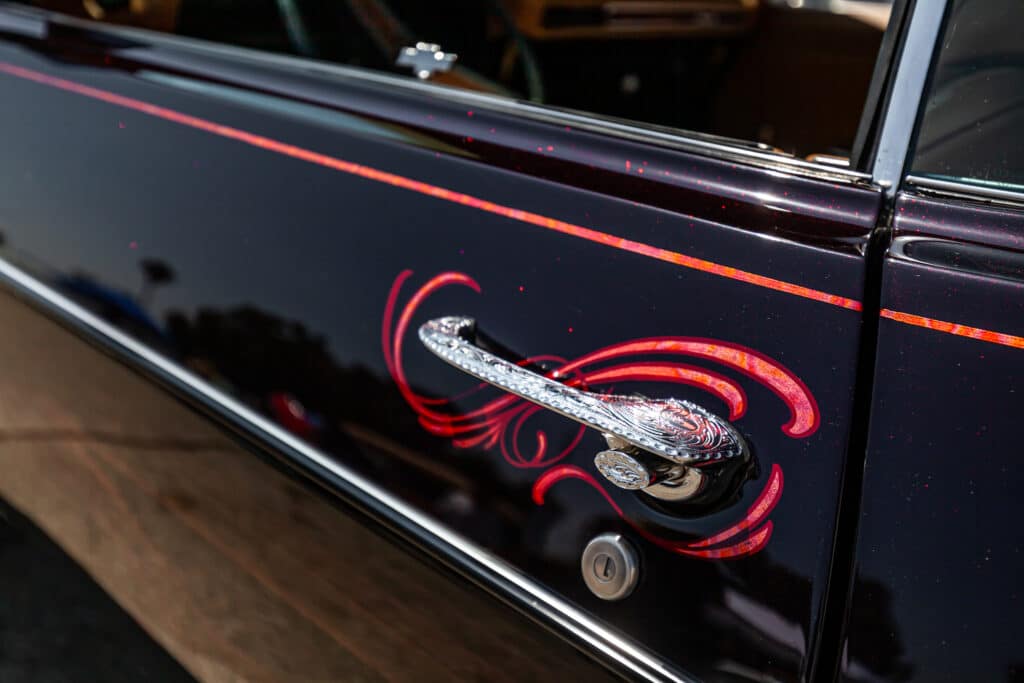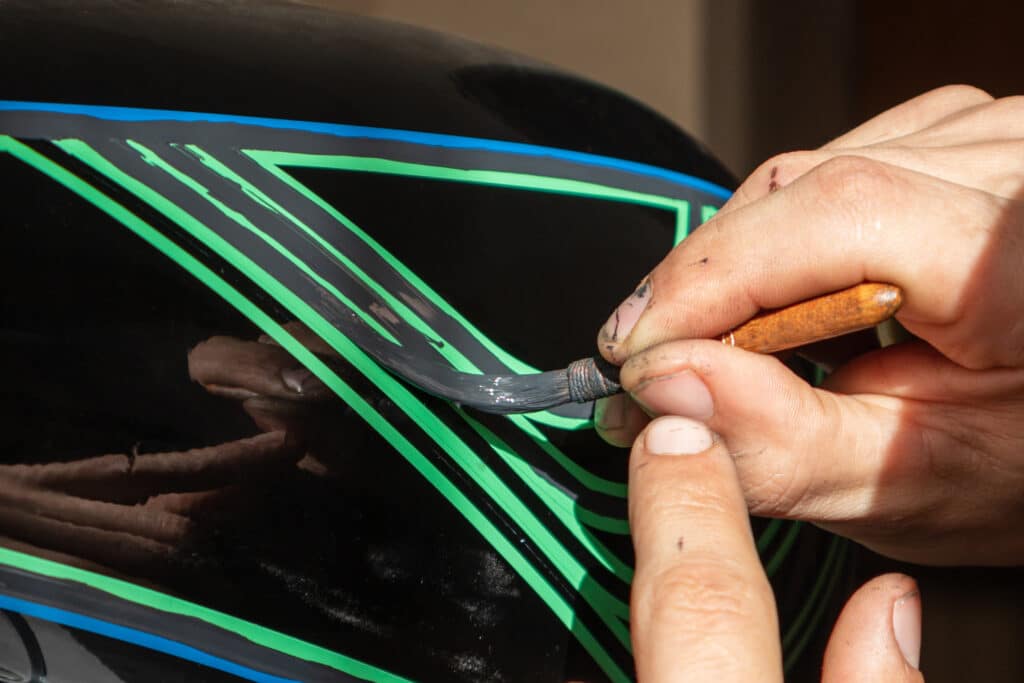The History of Automotive Pinstriping
Automotive paint customisation is an art form that has taken on many appearances throughout the years. From the Californian hot rod culture that sprang onto the scene in the late 1950s to distinctive designs painted on motorbikes, pinstriping techniques have been used by people all over the world for all kinds of reasons. Today, pinstriping is used as a means of showing off a vehicle owner’s individuality, although it also allows the stripers to showcase their artwork and skills at the same time.
The techniques and talents involved in automotive pinstriping have a fascinating history attached, and we’re here to take you through the most noteworthy parts. Learn all about the history, how it was shaped by pinstriping pioneers and how it has evolved over the years with our guide to its past.
The History of Automotive Pinstriping
How did automotive pinstriping begin? And how did it become what it is today? Below is a broken-down version of the pinstriping timeline from where believe it began to today.
Pinstriping: The Early Days
Pinstriping has taken many forms over the years, but when did it actually begin being used?
Although there are many conflicting views on this topic, it appears that pinstriping first began in the days of the Roman Empire when pinstripes adorned objects of nobility. In these earliest days, it was used to show that something was important or expensive – or sometimes both.
However, the idea of customising items with line art can also be linked with the ancient Egyptians, Greeks, Native Americans and tribal cultures of the South Pacific. We can safely assume that for as long as people have been owning their own possessions, the need for customisation and the desire for adding personalisation has been around.

By the 1800s, pinstriping was being used to decorate the intricate body lines of coaches and carriages with carefully painted thin lines. This is when we begin to see what’s still recognised as pinstriping and paint customisation today.
What Came Next for Pinstriping?
By the 1900’s, painted pinstripes appeared to accent the contours of nearly every early American automobile. Skilled stripers were added to the new concept on the assembly line and pinstriping became widely appreciated, especially in the 1950s and 60s when the American economy boomed.
Aftermarket pinstriping in automotive body shops became more common, and soon, car and motorbike owners were coming to the shops looking for more intricate designs and customisations. They wanted to show off their personality on the exterior of their vehicles, and this was the way that many chose to do so.
Pinstriping Today
Pinstriping is still practised and taught in body shops all over the world and is still regarded as a specialist skill. Automotive pinstriping today can take many forms, although it’s less common for manufacturers to hand-paint stripes on vehicles nowadays because of the costs and time. Rolls-Royce Motor Cars has a pinstripe specialist who still paints pinstripes by hand for customers who want this type of customisation.
The invention of automotive masking tape has also progressed pinstriping because it’s easier than ever to achieve clean lines, whether you’re adding straight lines along the vehicle’s body lines or creating complex designs.
Pinstripe Pioneers: Von Dutch, Ed “Big Daddy” Roth & More
Arguably, pinstriping would be nothing without the community that brought the techniques into the spotlight in the first place.

Von Dutch is easily one of the most talked about pioneers in pinstriping with his original style first brought to life on motorcycles in California. It’s commonly believed that Von Dutch brought what’s known as ‘modern pinstriping’ to life. He was one of the earliest stripers to paint modern designs on cars and was also heavily involved in hot rod culture.
Von Dutch isn’t the only big name in the pinstriping world worth mentioning, though. Edward “Big Daddy” Roth was another pinstriper from Southern California who is most famous for his work on hot rods in the late 50s and throughout the 60s. Roth’s custom Beatnik Bandit car was even one of the first die-cast toy cars produced by toy manufacturer Mattel when they unveiled the infamous Hot Wheels brand in 1968.
These two names are thought of as legends of the modern pinstriping movement, although other earlier pioneers like Tommy “The Greek” Hrones were developing similar techniques that were admired widely. Hrones cultivated his own pinstriping style in the early 1900s and even developed his own signature Hrones hash marks. These teardrops and arrows were the final flourishes on dashboards, fenders or trunk lids he was working on.
Perfecting Pinstripes with JTAPE
Pinstriping trends aren’t the only thing that’s come a long way, and thanks to JTAPE, there are now plenty of tapes to choose from that can help you create whatever customisations your clients want. So whichever pinstriping technique you plan to try, you can do so with ease and always achieve a quality finish at the end of the job.
To create perfect straight lines with crisp edges, a rigid striping tape is typically required. The JTAPE Striping Tape is the perfect tool for this with its thermally stabilised polypropylene backing and urethane-based pressure-sensitive adhesive. Whether you’re working on cars, commercial vehicles or boats, this tape makes it quick and easy to achieve straight pinstripes on body lines and ensures your finish is high quality.
Our Customising Tape also allows for customising when extra flexibility is needed. The 12mm PVC tape features a rubber-based adhesive that can be split into eight 1.5mm strips. This makes it perfect for creating designs of any width and shape using pinstriping techniques. All you’ll need to do is apply the tape to the vehicle’s surface wherever you want to place the design, press down the tape to secure it and begin painting your intricate striping. This tape is designed for flexibility and can bend as much as needed to create your ideal finish.
We hope you’ve enjoyed learning about the history of pinstriping and how it has evolved over the years. From ideas about where it began to the pioneering people who helped it become the art it is today, pinstriping appears to be here to stay as a painting technique.
At JTAPE, we’re proud to offer automotive masking tapes that help with popular techniques such as pinstriping. To discover our range, check out our product page.


